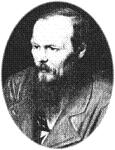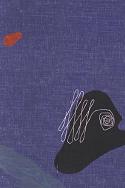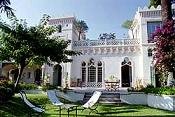 11.0 On this page, Miller explains how Mona and Stasia exist in a world of lies, yet draw blanks when discussing their childhoods ("From the cradle, apparently, they sprang into womanhood.") Stasia sometimes gives Henry clues by way of Dostoevski references.
11.0 On this page, Miller explains how Mona and Stasia exist in a world of lies, yet draw blanks when discussing their childhoods ("From the cradle, apparently, they sprang into womanhood.") Stasia sometimes gives Henry clues by way of Dostoevski references.
11.1 "Details bore them."Henry must ask them "point blank" or "coaxing" questions about their childhoods, but they never "permit themselves to slip into the past." Here are the few scant facts he managed to find out: they can swim, skate and have played jacks; one or the other has broken a leg and sprained an ankle.
11.2 Russia, Roumania, Vienna, and the flatlands of BrooklynMiller tries another tactic: mention their homelands and perhaps childhood memories will be tapped. All they do in response, however, is talk about "strange places, Russia and Roumania included, but as though they were recounting something which had been related to them by a stranger or picked up in a travel book."
11.3 "Stasia, a little more artful.."This is an example of Henry's sympathetic portrait of Jean Kronski in
Nexus, compared to his critical portrayal of June Mansfield.
11.4 DostoevskiFyodor Dostoevski [
1] [
2] (1821-1881) is of course one of Russia's greatest writers. He is mentioned over a dozen times throughout
Nexus. In Miller's
Books In My Life, he credits Dostoevski's "works in general" as being amongst his 100 most influencial books.
Here, it is Stasia dropping Dostoevski references, which Henry takes as a challenge to his memory of Dostoevski's works.
11.5 "I have an excellent memory for the aura of things read."Miller is never sure whether the facts presneted in Stasia's Dostoevski references are true or not, but he feels certain that he could identify "a false Dostoevskian touch." I included this as an annotation because, some day, I'd like to explore the subject of
how Miller read books.
11.6 The spelling of "Dostoevski"Miller spells is as above in
Nexus, but I'm sure everyone recognitzes the fact that Mr. D's name is often spelled in different ways.
Here's a little essay about these discrepancies. In
Books In My Life, Miller spells it "Dostoievsky." Maybe that was just the editor's touch.
12.0 This entire page is devoted to Dostoevski and his versions of madness and evil, as perceived by Mona, Henry, and Stasia. 12.1 "her god, Dostoevski."
12.1 "her god, Dostoevski."This refers to Mona's reverence. Mona is happy to hear Henry and Stasia talk about her idol, yet Miller adds an insult to her portrayal by contrasting this with the comment on page 11 that she is "aware neither of truth nor falsity" in their discussions of her supposed "god." [see 11.3]
12.2 "As if he invented all those mad people, all those crazy scenes which flood his novels."Miller commenting on Mona's wish that Dostoevski was with them. He seems to be responding to an idea Mona has that the madness in D's novels was invented for "pleasure" instead of being drawn from real life. Miller then suggests that Mona and Stasia don't realize that they exactly the type of real-life "mad characters" that he would have included in his books ("'mad' characters in a book that life is writing with invisible ink.")
Reseraching the "mad characters" and "crazy scenes" in the work of Dostoevski is beyond the scope of what I'm doing here, but, if you're interested, you may sift through
these essays for clues.
12.3 "'You're such a dear fool, Val.'""Val" is of course Henry, from his middle name Valentine.
12.4 "when she gets to raving about my unwritten books"A reference to the fact that Miller would use June as a sounding board for most of his ideas, but at that point in his life, he had not yet completed a book (not including his hack work
Clipped Wings, which he wrote for Wetsern Union).
12.5 "..another Dostoevski. A pity I can't throw an epileptic fit now and then."Henry wishes he could maintain the "necessary standing" when Mona compares him to Dostoevski. Mr. D was in fact an epileptic, as elaborated on in
this essay and also in
this study by Sigmund Freud.
12.6 bourgeoisIllusions of Dostoevski often degrade into insults of "
bourgeois" aimed at Miller by Mona. My understanding of this term as slander is that it means one is a member of a conservative and fearful middle class. Here, Miller says Mona calls him this for being "too inquisitive, too
picayune, too intolerant" as well as too interested in "facts."
12.7 Dostoevski, according to Mona 
.."was always in the couds --or else buried in the depths." "He lived only in the imagination."
12.8 "the diabolical element" [in Dostoevski]This is what Stasia is said to "relish." (she also believed that D had a "bourgeois" side). The paragraph about
the "evil" in Dostoevski continues onto page 13. Mona doesn't recognize the evil in Dostoevski's work, whereas Stasia believes in the "reality" of evil and the Devil.
12.9 "she was, after all, a little closer to reality."This is how Henry describes Stasia in comparison to Mona. Once again, a kinder portrayal of Jean and a critical presentation of Mona's fixation on "imagination."
<--- previous page 10 Next page 13 --->
 From the "Personal Archives of Henry Miller" catalogue of auctioned items on the PBA Galleries website, is a partial transcription of autobiographical notes written by Miller in 1943. The typed letter had been written for Bern Porter, in preparation--I assume--for Porter's 1945 bibliography of Miller's work. The five pages apparently give yearly accounts of his life up to age 52 (in 1943).
From the "Personal Archives of Henry Miller" catalogue of auctioned items on the PBA Galleries website, is a partial transcription of autobiographical notes written by Miller in 1943. The typed letter had been written for Bern Porter, in preparation--I assume--for Porter's 1945 bibliography of Miller's work. The five pages apparently give yearly accounts of his life up to age 52 (in 1943).



 11.0 On this page, Miller explains how Mona and Stasia exist in a world of lies, yet draw blanks when discussing their childhoods ("From the cradle, apparently, they sprang into womanhood.") Stasia sometimes gives Henry clues by way of Dostoevski references.
11.0 On this page, Miller explains how Mona and Stasia exist in a world of lies, yet draw blanks when discussing their childhoods ("From the cradle, apparently, they sprang into womanhood.") Stasia sometimes gives Henry clues by way of Dostoevski references.

 While I was away, I accumulated various Henry Miller internet references through my subscription to the Google Alerts keyword feature. Here are a few very trivial yet mildly interesting items from that collection.
While I was away, I accumulated various Henry Miller internet references through my subscription to the Google Alerts keyword feature. Here are a few very trivial yet mildly interesting items from that collection. Bezalel Schatz
Bezalel Schatz "Between Cannes and St. Tropez" on the French coast, in a village called Boulouris, sits a hotel called La Villa Mauresque. The hotel has co-opted the names of primarily French writers and artists and applied them to their luxury-priced suites. The rooms don't appear to have any
"Between Cannes and St. Tropez" on the French coast, in a village called Boulouris, sits a hotel called La Villa Mauresque. The hotel has co-opted the names of primarily French writers and artists and applied them to their luxury-priced suites. The rooms don't appear to have any 
